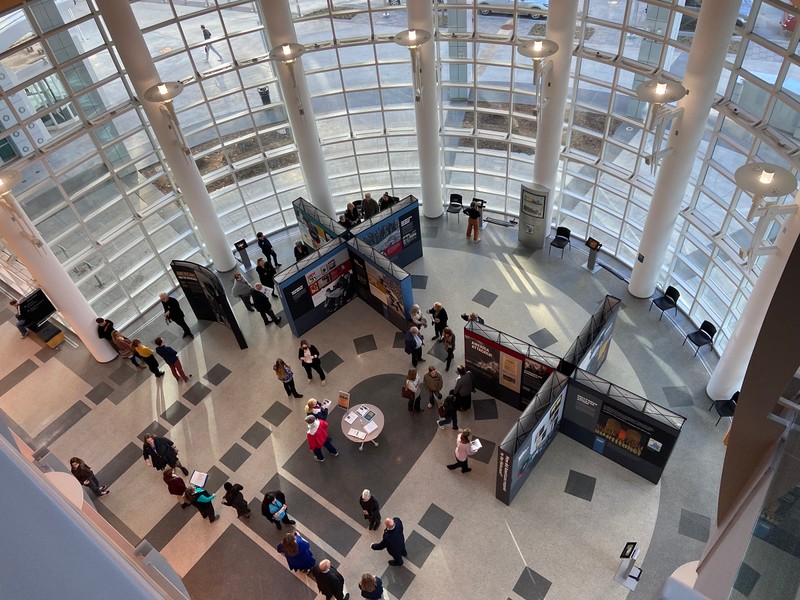Conclusion (Americans and the Holocaust)
Introduction
Author-Uploaded Audio
Conclusion (Americans and the Holocaust)
Text-to-speech Audio
As I hope you’ve seen, the United States faced many challenges between 1933 and 1945: the Great Depression, our own racism and prejudices, overcoming isolationism, and winning World War II by sacrificing on the battlefield and on the homefront. More than a tenth of the American population served in uniform, and more than 400,000 Americans were killed in the war. Even though Americans had information about the persecution and later murder of European Jews, rescuing them never became a priority for the United States or for the vast majority of the American people. But this exhibition also shows that individuals have the power to make a difference, and to do things to help. The Museum hopes that visitors to the exhibition will think about their own lives and ask questions about what more we can do to confront hatred and promote human dignity today.
Images

Backstory and Context
Text-to-speech Audio
Metropolitan Library System is one of 50 U.S. libraries selected to host AMERICANS AND THE HOLOCAUST, a traveling exhibition from the U.S. Holocaust Memorial Museum that examines the motives, pressures, and fears that shaped Americans’ responses to Nazism, war, and genocide in Europe during the 1930s and 1940s.
The Americans and the Holocaust exhibit will be on display at the Downtown Library, along with a series of related special events from Thursday, January 5 to Sunday, February 12.
Based on extensive new research of that period, Americans and the Holocaust addresses important themes in American history, exploring the many factors — including the Great Depression, isolationism, xenophobia, racism, and antisemitism — that influenced decisions made by the U.S. government, the news media, organizations and individuals as they responded to Nazism. This exhibition will challenge the commonly held assumptions that Americans knew little and did nothing about the Nazi persecution and murder of Jews as the Holocaust unfolded.
Drawing on a remarkable collection of primary sources from the 1930s and ’40s, the exhibition focuses on the stories of individuals and groups of Americans who took action in response to Nazism. It will challenge visitors to consider the responsibilities and obstacles faced by individuals — from Franklin Delano Roosevelt to ordinary Americans — who made difficult choices, sought to effect change, and, in a few cases, took significant risks to help victims of Nazism even as rescue never became a government priority.
Americans and the Holocaust was made possible by the generous support of lead sponsor Jeannie & Jonathan Lavine. Additional major funding was provided by the Bildners — Joan & Allen z”l, Elisa Spungen & Rob, Nancy & Jim; and Jane and Daniel Och. The Museum's exhibitions are also supported by the Lester Robbins and Sheila Johnson Robbins Traveling and Special Exhibitions Fund, established in 1990.
Sources
United States Holocaust Memorial Museum. Accessed January 5th, 2023. https://www.ushmm.org/.
American Library Association. Accessed January 5th, 2023. https://www.ala.org/.
